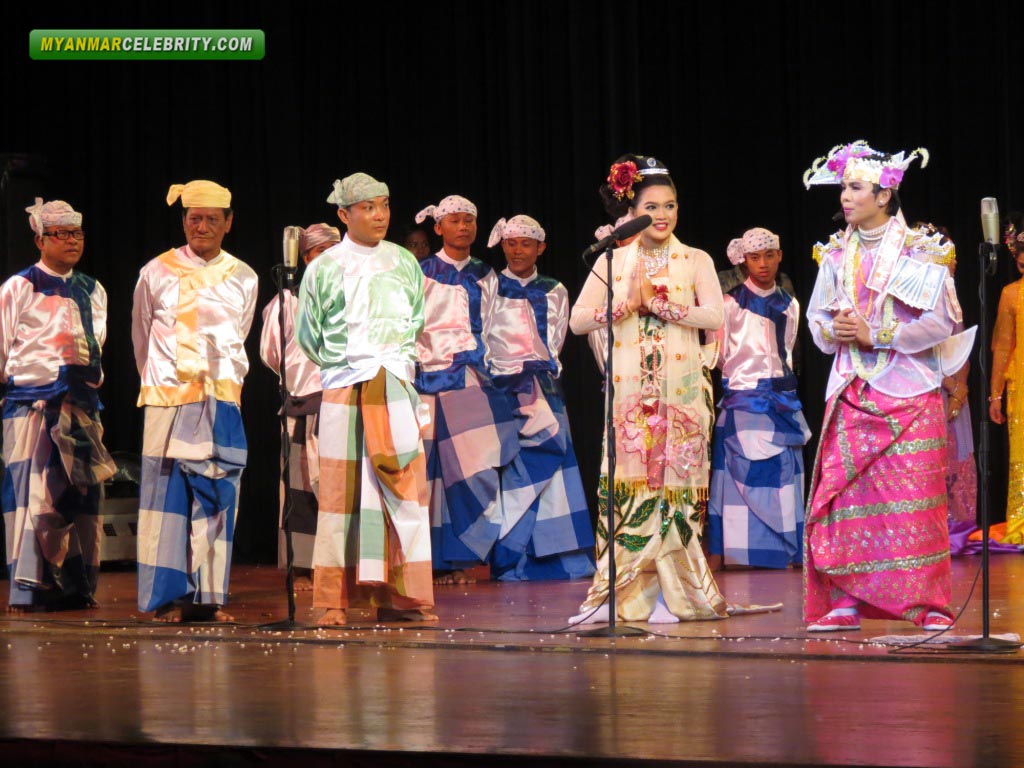Arts
Anyeint
- Details
- Hits: 6710
 Anyeint
Anyeint
Photo credit- www.myanmarcelebrity.com
Anyeint is a dance form closely resembling popular theatre. The name of this form is drawn from a Myanmar word meaning “gentle,” which is a fitting description.Although its origins are somewhat unclear, Anyeint is popular in Myanmar today, and is frequently encountered as one of the entertainments provided in connection with the numerous festivals which are an important part in Myanmar life.
One of the basic concepts of Myanmar festivals is that the festivals themselves re offerings of good will and pleasure to the community. In this way a performance by an Anyeint troupe may figure in both religious and secular celebrations. At times, as for example in the case of a small family festival such as the cradling of a new baby to which the neighbourhood is invited, the Anyeint may be the only entertainment offered.
The Anyeint performance as it is known today consists of two distinct yet complimentary elements. These are the singing and dancing of the Anyeint herself and the dialogue and slapstick of the clowns, Lu bye’.
There are 2 Minthamee (the female performer) included in Anyeint. One is the "Shay Dwe Minthamee" meaning the first female performer to dance and the "Naut Dwe Minthamee" meaning the last one or main Minthamee. There are at least 4 clowns who perform together with the performers. They recite poems and talk after each dance the Minthamee has performed, to give her a break and to give the audience some laughter.
There is a loose alternation of the formal singing and dancing of the Anyeint with the comic interludes of the clowns. Some Anyeint troupes are large and elaborate, Such troupes may also present formal, dramatic scenes mixed with song and dances, and may at times, follow the pattern of the traditional Pwe theatricals by staging an interlude, hnapa tawa, in which the entire cast appears for a series of solo and group dances interspersed with continuous dialogue and commentary by the clowns.
The style of Anyeint dancing is closely related to other forms of Myanmar dance. The same basic postures are used. The body is slightly arched while the knees are partially bent. The wrists are held close to the waist with the elbows back. From this stylized position, which is an exaggerated imitation of Myanmar puppets, the Anyeint moves with small steps, sometimes deftly kicking her train to the side. As the music intensifies, the movements may include vigorous leaps and even acrobatic turns which always stop at the end of the musical phrase as signalled by the beat of the clapper. But even in the most vigorous and rapid movements, the Anyeint style retains the gentle, graceful quality characterized by the name.
In modern times Anyeint performances are most frequently encountered with the Anyeint in the company of a troupe of clowns and the performance accompanied by the full Hsaing ensemble. In older and more classical styles, two Anyeint dancers may appear on stage accompanied by the Myanmar harp or the xylophone, while another musician keeps time with the bell and clappers. In such performances the emphasis is placed on the more formal elements of the dance itself. This small group of dancers and accompanists is considerably less theatrical than most of the troupes seen in Myanmar today.




